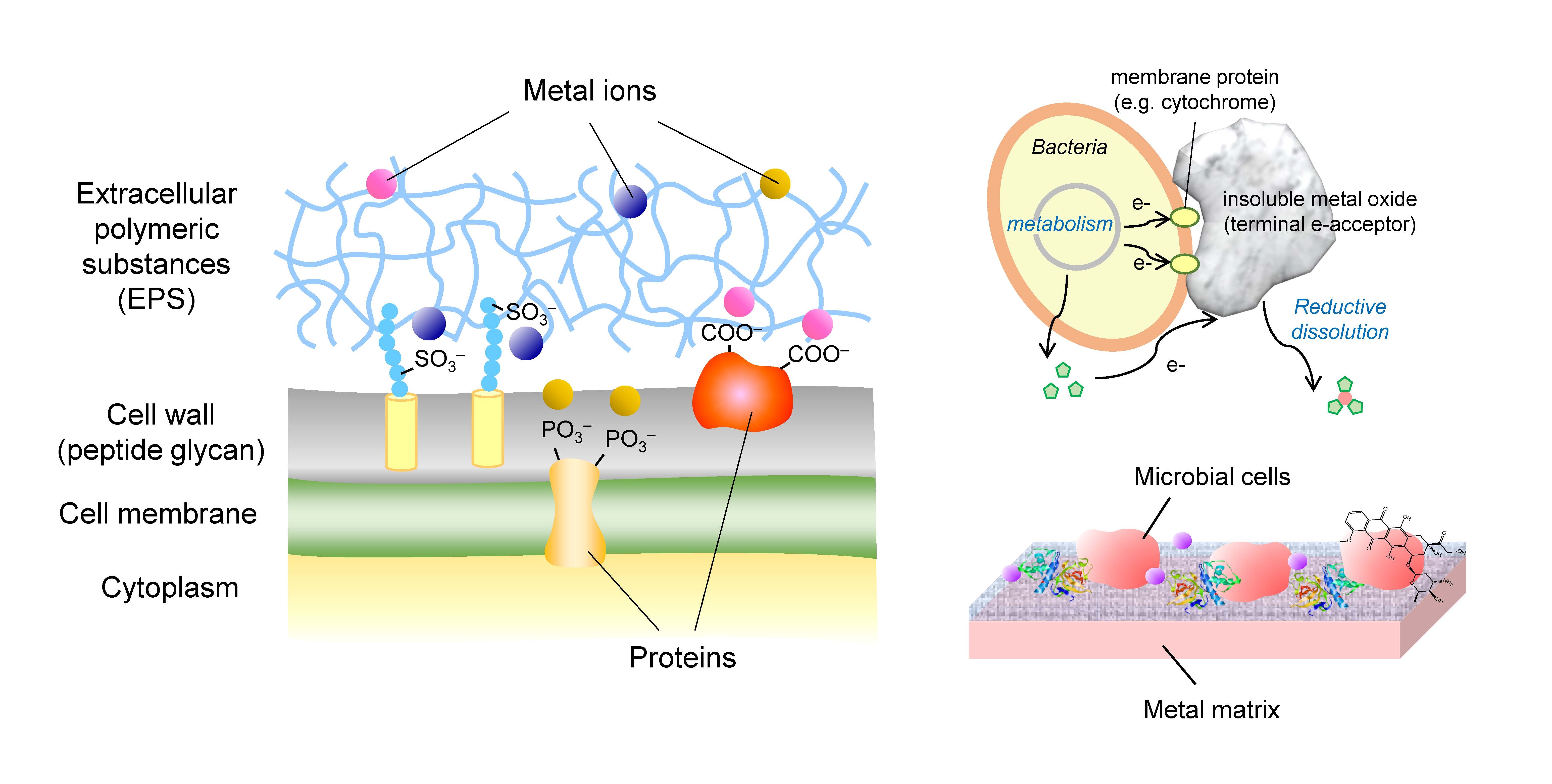Various types of proteins and polysaccharides exist in the cell walls/membranes that separate the inside and outside of cells, and they contain many functional groups such as phosphate, sulfate and carboxyl groups. Since these functional groups have a negative charge, they can electrostatically adsorb positively-charged metal ions. Thus, the adsorption technique of metals using biological functions is called biosorption. When microorganisms are used as adsorbents, microbial cells can spontaneously grow and replicate the adsorbents of metal ions just by providing nutrients, so biosorption is expected to be a low-cost and environmentally friendly metal recovery system. In addition, it is also possible to design microorganisms and biomaterials that can specifically adsorb metals by using genetic engineering and directed evolution technique. We employ these techniques to functionalize biomaterials to remove toxic metals from the environment, recover valuable metals from urban mines, analyze the interaction between metal solids and microorganisms, and immobilize microorganisms on various metal matrices.


